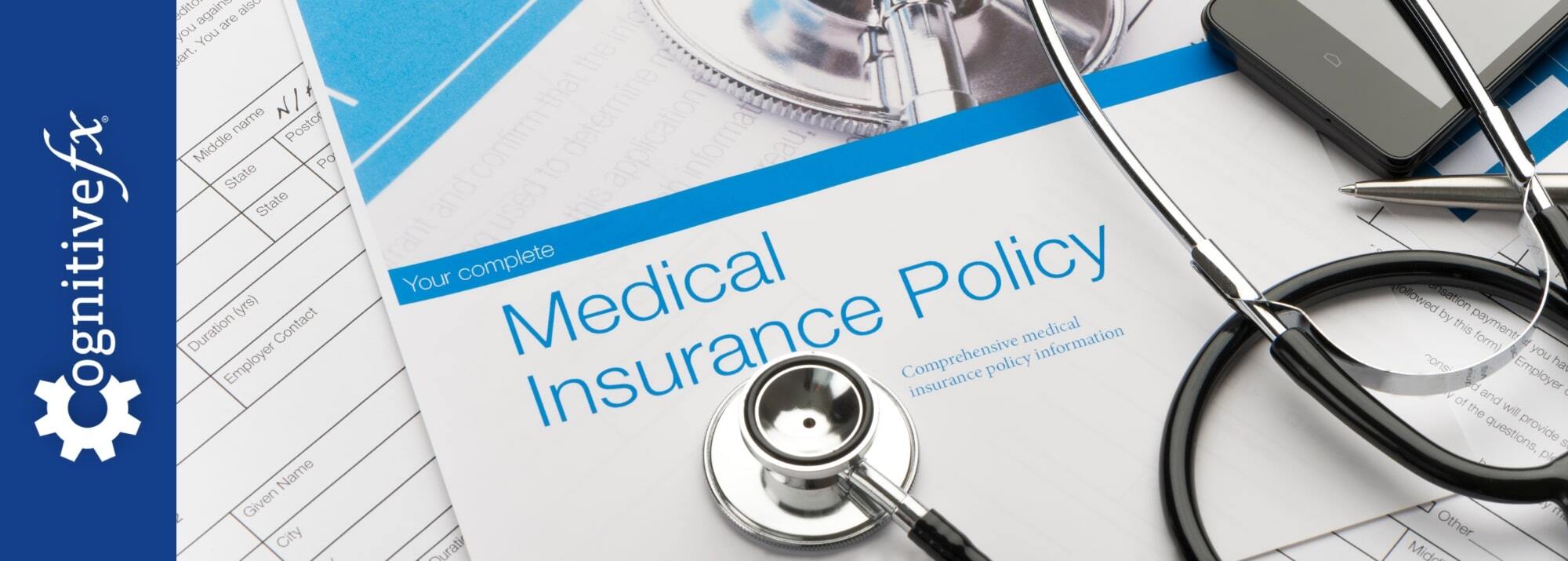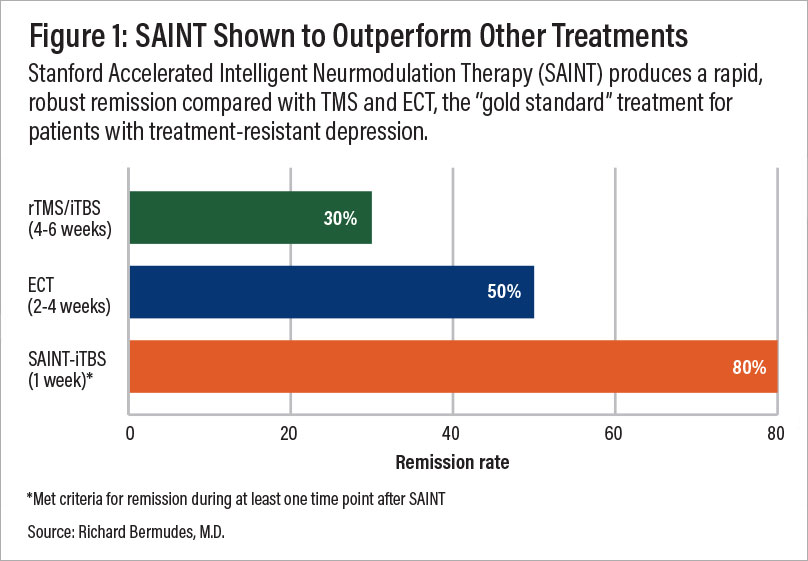What Does TMS Feel Like? (Complete Patient Guide)
If you’re considering Transcranial Magnetic Stimulation (TMS) — a procedure that uses electromagnetic pulses to improve depression symptoms — you may be wondering what the treatment actually feels...


Over the past few years, Transcranial Magnetic Stimulation (TMS) has become an increasingly popular treatment option for patients who haven’t found symptom relief from antidepressant medications.
However, TMS can be expensive, and navigating health insurance coverage isn’t always straightforward. Some forms of TMS are covered, while others are not. Even when they are, strict eligibility criteria usually apply.
In this article, we answer five key questions about TMS insurance coverage:
Conventional TMS is widely covered by insurance providers, while newer forms of TMS therapy may or may not be covered. Coverage depends on your insurance plan and the type of TMS you’re considering.
Here’s a breakdown of insurance coverage by TMS type:
Coverage: Most widely covered form of TMS.
Cost: $300–$500 per session; $6,000–$15,000 total without insurance. With coverage, copays typically range from $50–$250 per treatment session or $1,000–$7,500 total.
Tip: Before starting treatment, check your deductible and out-of-pocket maximums.
Coverage: Generally covered for major depressive disorder (MDD) and anxious depression. It’s also the only TMS option covered for obsessive-compulsive disorder (OCD).
Cost: Similar to rTMS—$6,000–$15,000 total, $300–$500 per session. With insurance, out-of-pocket costs usually fall between $50–$250 per session.
Coverage: Not currently covered by most insurance companies.
Cost: $6,000–$20,000+. While iTBS is faster and potentially cost-saving for healthcare systems, patients must currently pay out-of-pocket.
Coverage: Not yet covered in outpatient clinic settings. However, the Center for Medicare and Medicaid Services (CMS) now reimburses for SAINT in hospital settings, making coverage possible in some cases.
Cost: $30,000–$36,000 for a one-week program when administered through outpatient clinics.
Why SAINT™ costs significantly more: SAINT™ TMS is considered the new “gold standard” treatment for treatment-resistant depression, achieving significantly higher response and remission rates than conventional methods. Learn more about how SAINT™ works here.
| Type | Efficacy | Treatment Schedule | Cost (No Insurance) | Cost (With Insurance) |
|---|---|---|---|---|
| rTMS | ~50% response; ~30% remission | 20–30 sessions over 4–6 weeks | $6,000 –$15,000 | $1,000 – $7,500 |
| Deep TMS | Comparable to rTMS | 20–30 sessions over 4–6 weeks | $6,000 – $15,000 | $1,000 – $7,500 |
| iTBS | Comparable to rTMS | 20–30 sessions over 4–6 weeks; options for accelerated one-week protocols | $6,000 – $20,000+ | Not widely covered |
| SAINT™ | ~85% response & ~78% remission in randomized controlled trial | 50 sessions over 5 days | $30,000 – $36,000 | Not yet covered in outpatient clinics; possible coverage through CMS in hospital settings |
If your chosen TMS protocol is covered, insurers typically require:
Correct Diagnosis: Usually MDD or treatment-resistant depression (TRD).
Failed Antidepressant Trials: Most insurers require failure of at least two to four antidepressant medications; some specify certain drug classes.
Failed Psychotherapy: Some policies require at least one documented attempt at talk therapy.
Symptom Severity: Some insurers only approve coverage for severe cases.
Proof of Medical Necessity: A letter from your doctor explaining why TMS is needed.
Pre-Authorization: Most insurers require approval before treatment begins.
Age Restrictions: Typically covered for ages 18 to 65; off-label use outside this range is rarely covered.
To improve your approval odds:
Document Everything: Keep a detailed record of each mental health intervention you’ve tried (medications, psychotherapy, etc.) and outcomes.
Follow Prescribed Depression Treatments: Show that you’ve engaged fully with prior therapies.
Get a Strong Doctor’s Letter: Have your doctor explain why TMS is medically necessary. It should detail your diagnosis and treatment history, explaining why TMS is being recommended now. It should state clearly that TMS is a medically necessary treatment for your condition.
Understand Your Insurance Policy: Review coverage terms and work with your clinic to submit proper documentation.
Keep Copies: Save every document and log your communications.
Be Persistent: Follow up frequently—approvals can take time.
While each insurer sets its own rules, common reasons for denial include:
A denial doesn’t mean the end of the road. You still have options:
Appeal the Decision: Work with your TMS provider to submit additional documentation and request a review.
Explore Financing Options: Many clinics offer payment plans or third-party financing. Compare lenders before applying to protect your credit score.
Consider Self-Pay: If you pay out-of-pocket, you may have access to newer, accelerated protocols that are not typically covered by insurance.
With conventional TMS, the most common method for locating the treatment target area is the 5 cm method. This approach involves manually measuring the patient’s head to estimate the correct location.
While it’s easy to perform and doesn’t require specialized equipment, studies show this method can be unreliable because it doesn't account for individual variations in head size, shape, and brain structure.
Even small deviations in targeting the DLPFC can significantly affect treatment outcomes, as missing the area by a few millimeters can reduce the effectiveness of treatment.
To solve this issue, a team at Stanford University developed a new protocol, called SAINT™. It uses an fMRI brain scan to identify the exact treatment location for each patient, along with a technology called “neuronavigation” to ensure the magnetic pulses are delivered to that exact location for every treatment session. The results were groundbreaking.
In a double-blind randomized clinical trial, about 86% of patients responded to the SAINT™ treatment, and around 79% reached remission. All participants had treatment-resistant depression and had failed at least two other depression treatments. One month after treatment, 60% were still in remission.

A comparison of remission rates for rTMS/iTBS, ECT, and SAINT-iTBS.
The speed with which SAINT™ can achieve high response and remission rates makes it one of the most effective treatments for depression available today. However, this treatment is only available at a handful of clinics nationwide; it’s in the range of $30,000 to $36,000, and it’s not covered by insurance.
Our Utah-based clinic, Cognitive FX, offers an accelerated fMRI-guided TMS protocol with the same core elements that make SAINT™ TMS so revolutionary—fMRI and neuronavigated targeting with accelerated iTBS delivery—at a significantly lower cost.
Key differences from Magnus SAINT™ TMS:
We use advanced fMRI analysis by our neuroscientist and physician, rather than proprietary software, to determine the stimulation site.
We process scans in-house, leveraging 25 years of clinical fMRI experience from treating brain injury patients.
We pass those efficiencies on to patients: $9,000–$12,000 vs. $30,000+.
| Accelerated fMRI - TMS | Magnus SAINT™ TMS | |
|---|---|---|
| FDA-Approved iTBS | ✔ | ✔ |
| FDA-Approved Neuronavigators | ✔ | ✔ |
| FDA-Approved Figure 8 Coils | ✔ | ✔ |
| Number of Treatment Days | 5 | 5 |
| Treatments per Day | 10 | 10 |
| Total Treatments | 50 | 50 |
| Number of TMS Pulses | Approx. 90,000 | 90,000 |
| Resting motor threshold pulse intensity | 90–120% | 90–120% |
| FDA-Approved Personalized DLPFC Targeting | ✘ | ✔ |
| Personalized DLPFC Targeting Assists Doctor in Target Location | ✔ | ✘ |
| Personalized E Field Coil orientation | ✔ | ✘ |
| Cost | $9,000 to $12,000 | $30,000+ |
Our protocol of TMS is:
Safe: Our outpatient, noninvasive treatment is widely tolerated and associated with mild, short-lasting side effects.
Precise: fMRI ensures that the treatment target area is precisely located for each patient, accounting for variations in head size and shape. Neuronavigation ensures the magnetic coil is placed with pinpoint accuracy for every treatment session.
Fast: Treatment courses are reduced to a single week, making it easier to complete alongside life and work commitments (compared to 4 to 6 weeks of standard TMS and accelerated TMS protocols).
Highly Effective: Precision coil placement combined with theta burst stimulation produces the best TMS treatment results to date.
Like SAINT™ and most accelerated TMS protocols, our fMRI-guided TMS treatment is not currently covered by insurance. If you need to pay via insurance, we have a sister clinic that offers rTMS treatment. However, you’re also likely to find a clinic offering rTMS closer to where you live, as it is the most common protocol used.
To improve outcomes for our patients, we also include cognitive behavioral therapy (CBT) as part of our treatment. When combined with conventional TMS (rTMS), CBT improved response and remission rates by ~8% and ~19%, respectively. Additionally, CBT is likely to support sustained improvement over time once treatment has concluded.
Our outpatient, non-invasive treatment is ideal for most patients with major or treatment-resistant depression. For safety, we do not treat:
Click here to learn more about receiving accelerated fMRI TMS therapy at Cognitive FX. Or, take our quiz to see if you’re a good fit for treatment.

Dr. Mark D. Allen holds a Ph.D. in Cognitive Science from Johns Hopkins University and received post-doctoral training in Cognitive Neuroscience and Functional Neuroimaging at the University of Washington. As a co-founder of Cognitive Fx, he played a pivotal role in establishing the unique and exceptional treatment approach. Dr. Allen is renowned for his pioneering work in adapting fMRI for clinical use. His contributions encompass neuroimaging biomarkers development for post-concussion diagnosis and innovative research into the pathophysiology of chronic post-concussion symptoms. He's conducted over 10,000 individualized fMRI patient assessments and crafted a high-intensity interval training program for neuronal and cerebrovascular recovery. Dr. Allen has also co-engineered a machine learning-based neuroanatomical discovery tool and advanced fMRI analysis techniques, ensuring more reliable analysis for concussion patients.

If you’re considering Transcranial Magnetic Stimulation (TMS) — a procedure that uses electromagnetic pulses to improve depression symptoms — you may be wondering what the treatment actually feels...

Patients considering transcranial magnetic stimulation (TMS) often wonder whether or not they can continue taking their antidepressant medication while undergoing TMS treatment.

The type of protocol used is the most important factor influencing the price of TMS. Conventional TMS protocols are often the most affordable, while advanced protocols typically cost more, but can...

Transcranial magnetic stimulation (TMS) and neurofeedback are gaining popularity as non-invasive, medication-free options for treating depression—especially for people who haven’t found relief from ...

A major challenge for patients with depression is that traditional antidepressant medications often take weeks or months to show results — if they work at all. This delay can be especially...

For many people living with major depression, antidepressant medications either don’t work or only get them part of the way to recovery. Symptoms may ease for a while, but then return, or never fully...